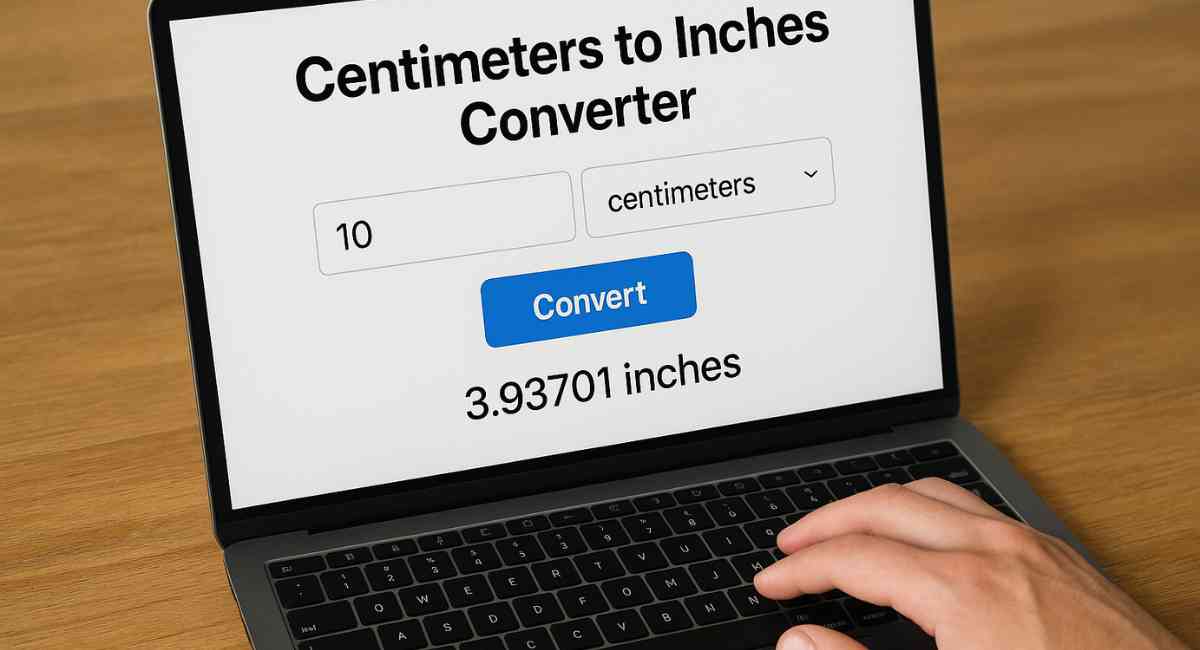Centimeters to Inches Converter
Quickly convert between metric and imperial units with our free, accurate conversion tool
Real-Time Conversion Calculator
Centimeters (cm)
Metric UnitInches (in)
Imperial UnitVisual Comparison
10 cm is approximately 3.94 inches
Understanding Centimeters to Inches Conversion
Converting between centimeters and inches is a fundamental skill in our global world. Whether you’re traveling, shopping online, or working on a DIY project, knowing how to convert centimeters to inches improves communication and ensures accurate measurements.

Why Conversion Matters
The metric system (centimeters) and imperial system (inches) coexist today. While most countries use metric, the United States primarily uses imperial measurements. This creates countless situations where conversion is essential:
When precision matters, always use our conversion tool rather than mental math. The difference between 1 cm (0.3937 in) and 1 inch (2.54 cm) is significant in many applications.
The Simple Conversion Formula
The conversion between centimeters and inches uses a fixed relationship established in 1959:
1 inch = 2.54 centimeters
To convert:
- Centimeters to inches: Divide by 2.54
- Inches to centimeters: Multiply by 2.54
For example, to convert 20 cm to inches: 20 ÷ 2.54 = 7.874 inches. To convert 5 inches to centimeters: 5 × 2.54 = 12.7 cm.
Common Conversion Reference Table
This reference table provides quick conversions for common measurements. Bookmark this page for easy access to these conversions whenever you need them.
| Centimeters (cm) | Inches (in) | Common Use Case |
|---|---|---|
| 1 cm | 0.3937 in | Small jewelry measurements |
| 2.5 cm | 0.984 in (~1 inch) | Button sizes, small components |
| 10 cm | 3.937 in | Mobile phone screen sizes |
| 15 cm | 5.906 in | Small tablet devices |
| 30 cm | 11.811 in (~1 foot) | Standard ruler length |
| 50 cm | 19.685 in | Small luggage dimensions |
| 100 cm | 39.37 in | Child’s height, fabric measurements |
| 160 cm | 62.992 in | Average female height |
| 180 cm | 70.866 in | Average male height |
| 200 cm | 78.74 in | Door height, large furniture |
For more comprehensive conversion tables, the National Institute of Standards and Technology provides authoritative measurement references.
Historical Context of Measurement Systems
Origin of the Inch
The inch has a fascinating history dating back to ancient times. The word “inch” derives from the Latin “uncia” meaning “one-twelfth,” as it was originally defined as 1/12 of a foot. This definition came from ancient Roman measurements.
Throughout history, the exact length of an inch varied significantly between regions. It wasn’t until 1959 that the international yard and pound agreement standardized the inch to exactly 2.54 centimeters.
Development of the Metric System
The centimeter is part of the metric system, developed during the French Revolution in the late 18th century. The French Academy of Sciences created a system based on natural constants rather than arbitrary human measurements.
The meter was originally defined as one ten-millionth of the distance from the equator to the North Pole. This established the centimeter as one-hundredth of this fundamental measurement. Today, the meter is defined by the distance light travels in a vacuum in 1/299,792,458 seconds.
The United States signed the Treaty of the Meter in 1875, making the metric system legal for commerce, yet imperial measurements remain dominant in daily life. The UK similarly uses a mix of both systems.
Practical Applications of Conversion
In International Commerce
Global trade requires constant conversion between measurement systems. Products manufactured in metric-using countries must often be labeled with imperial measurements for the U.S. market. This affects everything from clothing sizes to electronic specifications.
For example, a European bicycle frame measuring 56 cm would be marketed as approximately 22 inches in the United States. Accurate conversion prevents costly mistakes in manufacturing and shipping.
In Science and Engineering
While science predominantly uses metric measurements, many engineering fields in the U.S. still work in inches. Aerospace, automotive, and construction industries often require precise conversions between systems.
The Mars Climate Orbiter famously failed in 1999 due to a unit conversion error between pound-force seconds (imperial) and newton-seconds (metric), resulting in a $125 million loss. This underscores the critical importance of accurate conversions in technical fields.
In Daily Life
From reading nutrition labels to following international recipes, conversion skills prove valuable daily. Online shopping has made this particularly relevant as consumers purchase products from global marketplaces.
For instance, when buying a TV, screen sizes are typically measured diagonally in inches. A European consumer might need to convert this to centimeters to visualize the actual size: a 55-inch TV measures approximately 140 cm diagonally.
Need to Convert Another Measurement?
Try our accurate conversion tool at the top of this page for instant results
Measurement Tips and Best Practices
Ensuring Accuracy
When precision matters, follow these guidelines:
- Use quality measuring tools appropriate for your task
- For critical measurements, convert in both directions to verify accuracy
- Be aware of rounding conventions in your industry
- When converting between systems, carry extra decimal places through calculations before rounding the final result
Digital vs. Physical Measuring
While digital tools offer convenience, traditional measuring tools still have advantages:
| Method | Advantages | Limitations |
|---|---|---|
| Digital Calipers | Precise to 0.01mm, easy unit conversion | Requires batteries, limited length capacity |
| Steel Ruler | Durable, no power needed, good visibility | Limited to ruler length, reading errors possible |
| Tape Measure | Portable, long measurements | Sag can cause inaccuracy, harder to read small units |
| Laser Measures | Long-distance capability, high precision | Expensive, requires clear line of sight |
The International Bureau of Weights and Measures maintains measurement standards worldwide. more related converters
